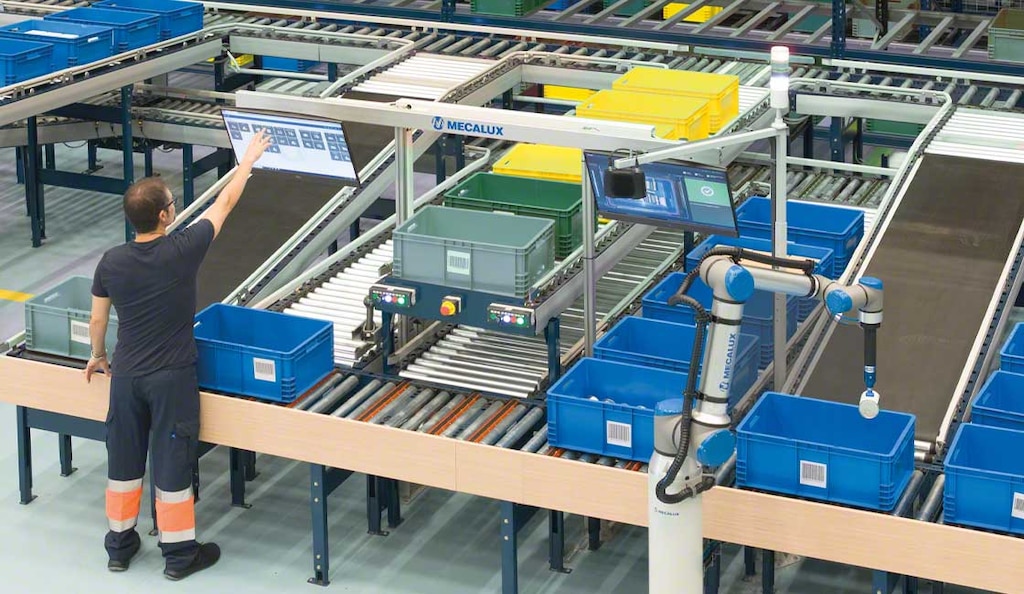
LOGISTICS RESEARCH
René De Koster, Professor of Erasmus University Rotterdam
Since the invention of the first automated guided vehicles (AGVs) in the 1950s, automation has steadily gained momentum. But after the whirlwind of the last seven decades, what will warehouses of the future look like? René De Koster, Professor of Logistics and Operations Management at Rotterdam School of Management, explores the latest trends, experiences, and technological advancements in his publication Warehousing 2030.
Modern artificial-intelligence-based software and inventions such as autonomous mobile robots (AMRs) — equipped with sensors and simultaneous localization capabilities — have profoundly transformed intralogistics processes in recent years. A case in point is warehouse management systems (WMSs). These software programs, which control inventory and streamline workflows, are ever more prevalent in logistics facilities. People and objects can carry sensors that capture real-time data and communicate with their surroundings, enabling networking through the Internet of Things (IoT).
According to De Koster, these advancements show no signs of slowing down in the next decade. “We see both centralization and decentralization trends, more automated storage and order picking systems that require a reduced footprint, several new types of robot systems, increased emphasis on sustainability, safe working environments and IoT applications, and attention for human factors. Although these developments have received some research attention, much work is still to be done,” writes the expert.
Facility size and location
In the last 20 years, logistics centers have progressively become larger in Europe, Asia, and countries such as the US, Germany, the Netherlands, and Belgium. Causes of this phenomenon include the consolidation of operations to lower shipping costs and the expansion of product assortment, particularly in sectors like e-commerce.
Market changes have also affected the geographical locations of logistics centers. Increasingly tighter delivery times are bringing product storage closer to final points of consumption. This stiff competition to expedite distribution is leading to the coexistence of bigger warehouses with new, smaller facilities set up near city centers. De Koster notes that this trend will continue, with large-volume warehouses growing in parallel with smaller ones dedicated to e-commerce and cross-docking operations. Both types of facilities will be heavily automated to make the most efficient use of space.
Automation
Nowadays, goods-to-person systems such as AMRs coexist with automated spaces in which robotic handling equipment moves loads to picking areas. Automated storage and retrieval systems come in a variety of models. They range from stacker cranes to a shuttle car on each level or a multidirectional one capable of changing levels.

Advancements have also reached order fulfillment, where it is now possible for robots to pick various items from storage bins. These machines incorporate cameras that identify products through deep learning and training on object geometries.
Human factors
Humans will still be needed in warehouses — even those with a high degree of automation. For De Koster, the challenge lies in redesigning work in collaboration with robots and retaining and motivating employees. To raise productivity, he recommends establishing individual and team goals and providing incentives and feedback on job performance.
Trends: safety, sustainability, and IoT
Warehousing in 2030 will feature a safer work climate and minimize accidents through automation to attract labor. In places such as Western Europe — with a shortage of qualified personnel and an aging workforce — logistics facilities will most likely be equipped with more robots.
Buildings are a source of greenhouse gas and fine particle emissions. Therefore, new facilities are applying for sustainability certification such as BREEAM or LEED. Likewise, bioclimatic architecture, renewable energy sources, energy efficiency measures, recycling, and heat recovery will become more widespread throughout the decade.
The third aspect set to change how product management and order fulfillment work is the IoT. In logistics facilities, data capture began with RF devices. Currently, numerous businesses employ augmented reality glasses to interact with their surroundings, a trend that will only increase.
Ultimately, De Koster indicates that warehouses in 2030 will not differ significantly from those in operation today. Instead, he suggests, the described lines of action will be scaled up in the years to come.
Author of the research: René De Koster, Professor of Logistics and Operations Management, Rotterdam School of Management, Erasmus University Rotterdam (Netherlands).
Original publication: Koster, René De. 2023. Warehousing 2030, in Global Logistics and Supply Chain Strategies for the 2020s, ed. R. Merkert and K. Hoberg (Springer, Cham).
